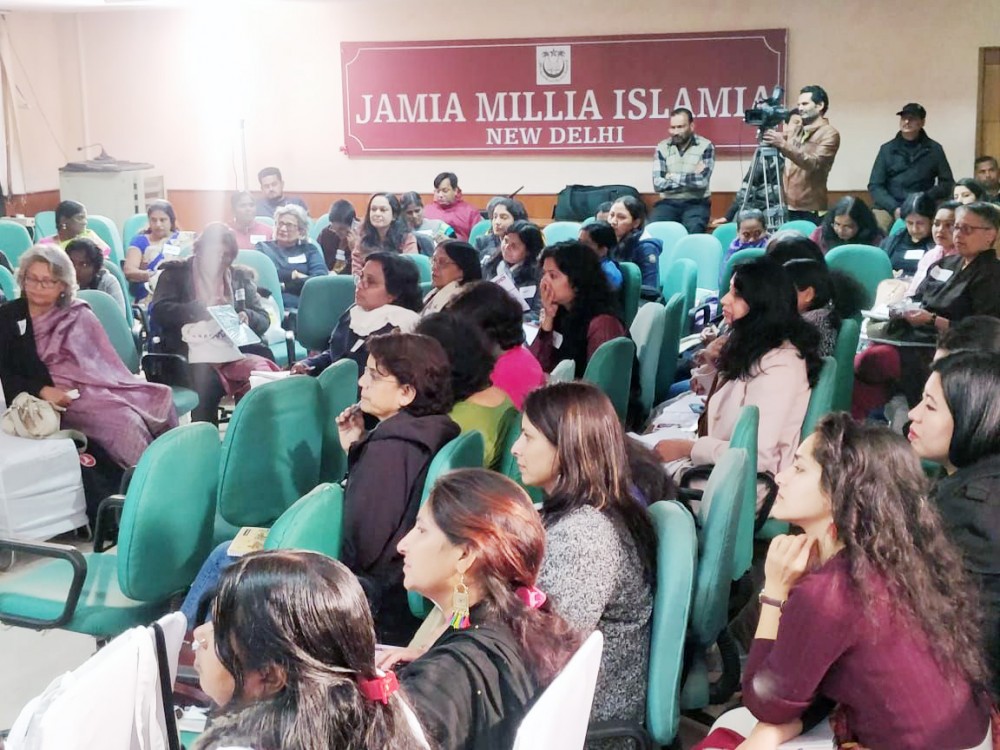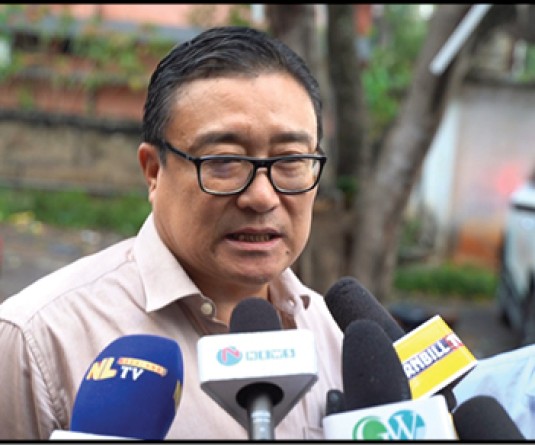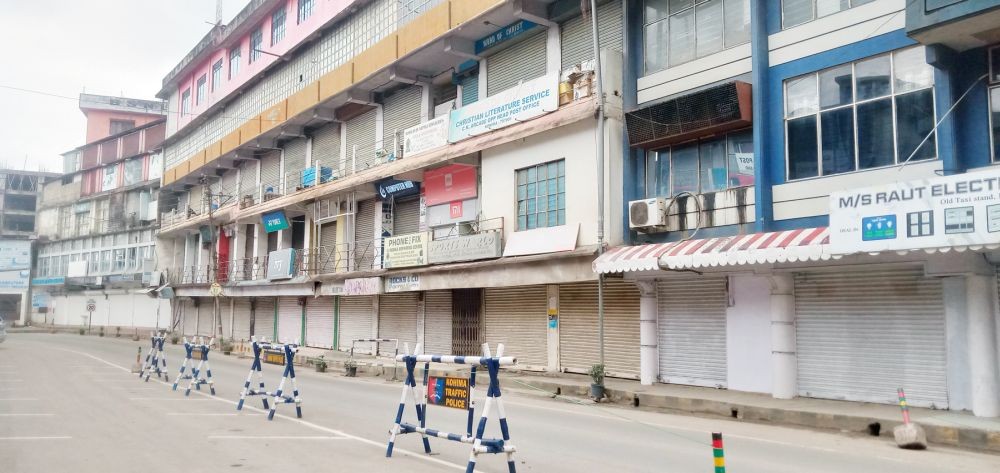Member/ participants of Network of Women in Media India (NWMI) at the 14th national meeting at Jamia Millia Islamia University in New Delhi on February 1. (Morung Photo)

Only 13.6% women part of panel discussions on TV news channels
Morung Express News
Dimapur | February 1
Despite increasing voices of dissent worldwide over the absence of women voices in public sphere and negligible representation of women in panel discussions in news media amounting to tokenism, only 13.6 percent women are part of panel discussions on TV news channels in India.
This is one of the findings of a month-long media study of 28 TV channels in India undertaken by members of the Network of Women in Media India (NWMI), which was released at the National Conference of NWMI at Jamia Millia Islamia University in New Delhi on Friday.
Within the overall theme ‘Making Gender Count: Towards Visibility, Equity, and Safety,’ the three-day 14th NWMI’s National Meeting, which started on February 1, will conclude on Saturday.
According to the executive summary of the report titled “Panels or Manels? Desperately seeking women in Indian TV news debates: Report on a Study on the Representation of Women in Indian TV News Channels,” a total of 390 hours of TV news programmes and talk shows were viewed in one month in the summer of 2017 and 506 programmes were monitored in 12 different languages including English, Hindi, Gujarati, Telegu, Tamil, Malayalam, Punjabi, Bengali, Assamese, Odia, Marathi and Urdu.
In as many as 65 percent of total TV news programmes monitored, there wasn’t even a single women in the panel discussions held during prime time news and talk shows on leading TV channels of India. Surprisingly, the study also revealed that in English channels representation of women in panel discussions in prime time news and talk shows was just 17 percent, well below Hindi channels where women comprised 23 percent of panels.
As far as anchors are concerned, while the perception is that there are as many women journalists anchoring news shows (as men), the study revealed that only 28 percent of the news anchors were women and an overwhelming 72 percent of news anchors were men. In Hindi channels, as many as 89 percent of the anchors were males.
Among the different languages, Tamil and Punjabi TV channels had the lowest representation of women in panel discussions (at just 5 percent) while Hindi TV channels (23 percent) and Gujarati TV channels (21 percent) were on top with respect to women's participation in panels amongst all the languages monitored.
The study also showed that when women's issues were discussed, women made up 50 percent of panels. However, when finance, defense, sports, agriculture and health were discussed, they represented less than five percent of the panel discussions.
In short, the study found that women's voices were missing in crucial matters which are being debated in the country and their opinions didn’t seem to matter — going by the fact that women were absent in two third of the debates and discussions which were being held by news channels in the country.
Accordingly, the study recommended that all TV news channels should make a deliberate effort to substantially increase the participation of women in panel discussions and talk shows. It also recommended that women shouldn’t be only called as experts for "soft subjects" but should be included in a range of topics like politics, economics, foreign affairs, defense, finance and agriculture.
Channels were also asked to ensure that women get enough time to speak and their voices are not drowned out by shouting male panelists. It also stated that women panelists should not be insulted or shamed into keeping quiet.




